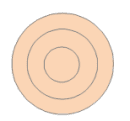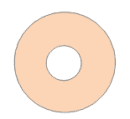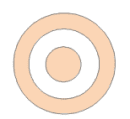Object editing is a common operation, for example, when we are drawing the map of China, it is needed to merge the islands in the South China See as a complex object. Or when processing the land changing, using the part changing functionality to update the land border. provides 28 editing functions.
This document compares the similar object editing.
Group and union
- Union applies to region layer, and CAD layer (object of the same type), group applies to line layer, region layer, text layer and CAD layer.
- Union can only applies to the object of the same type to create complex object, but group can apply to different type of object to create compound object.
- The source object in the union operation is dissolved as a sample or complex object; but the source object in the group operation is group to a block and become a compound object, and not dissolved.
- Union can’t operate point objects, but group can.
- In the union computing, non-system field and field SmUserID is processed in multiple methods (retain the first, null, sum and average); In the group, non-system field SmUserID will retain the attribute value of the SmID field of the source object.
Offset and move
- Move applies to all geometry object; offset applies to simple object and complex object that contains sub object and does not applies to the compound object in CAD layers.
- The move operation will not create new object and only change the location of the object: but offset will create new object parallel to the source object.
Ungroup and explode
- Ungroup applies to line layer, region layer, text layer, CAD layer, explode applies to line layer and CAD layer.
- The ungroup operation applies to complex object or compound object, and explode only applies to line objects.
- Ungroup decompose the complex object of compound object to single object, but explode blow away the line object at the node to create simple object.
XOR and Doughnut/Island Polygon
- XOR operation deletes the common part of two object and union the remain parts; Doughnut/Island Polygon is determined by the parity of the intersection parts.
As demonstrated in the figure below:


